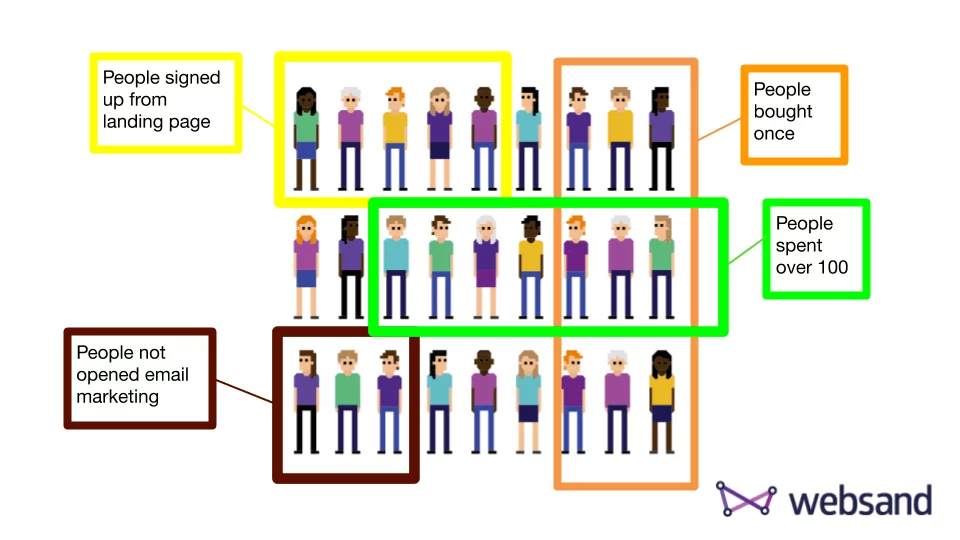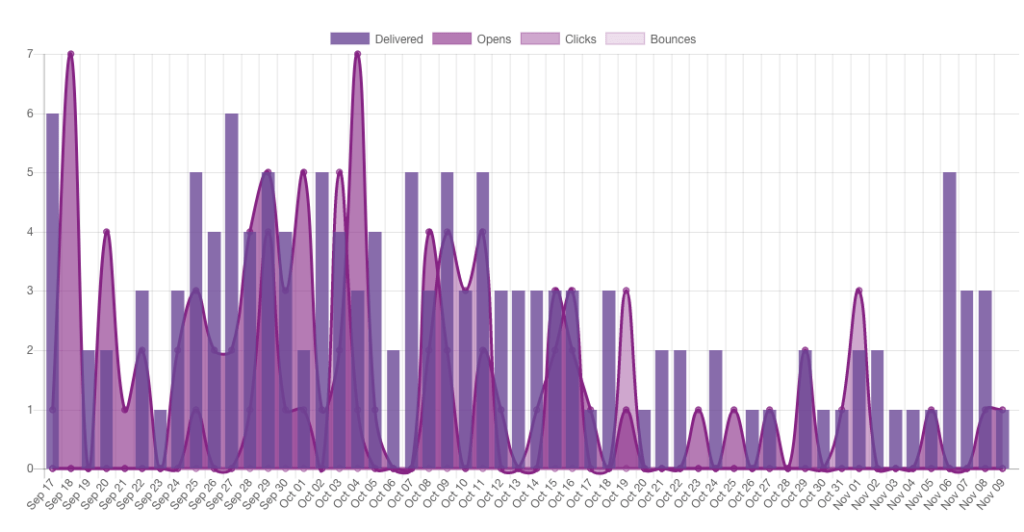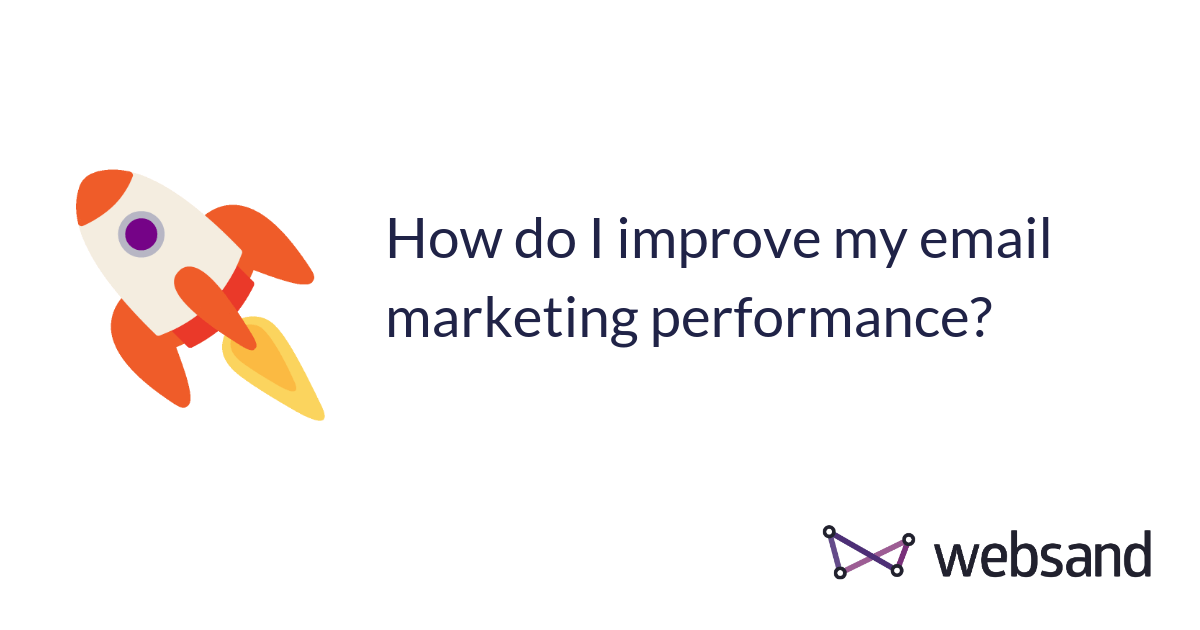How do I improve my email marketing performance?
“How do I get better email marketing performance?” should be a key question on the mind of the majority digital marketers. Email marketing is one of the oldest of the digital marketing channels, so isn’t often regarded as sexy. But it remains damn effective, with understandable results, and a killer ROI.
Digital Marketing can be tough
Digital marketing is getting tougher and tougher. It’s not just your competition you are dealing with, it’s also the channels you use to acquire new customers.
Facebook and Google are constantly changing their algorithms, so getting the free exposure you’d planned is harder and harder. As a result, more effort is being placed on paid ads, which are getting more and more expensive.
And then trying to attribute which of these channels is and isn’t working is also becoming harder.
The digital marketing way of being able to measure everything, is slowing returning to the old advertising statement from the ‘Mad Men’ era. “I know I’m wasting half of my marketing budget, I just don’t know which half”.
The old selling point of analytics is being eroded.
Most analytics reports I see these days have the N/A filter applied. Why? Because ‘I don’t know’ is now the number one answer to the attribution question.
Can good old fashioned email marketing save the day?
Which brings me to one of the few marketing channels you can still control, email marketing.
You’ll already have an audience you’ve collected over time (in the correct manner). You can use email marketing to communicate with them directly and you can understand the outcomes.
If your SEO ranking drops because an algorithm changes, it doesn’t change your email marketing performance.
If Facebook decides to block your instagram account, it doesn’t change your email marketing performance.
However, if you offer a terrible product or service, or send email messages that aren’t relevant to your audience. That will impact your email marketing performance.
So as a digital marketer, email marketing is one of the few channels you can control.
Understanding email marketing speak
Before we look at some ‘industry benchmarks’ it’s important that you understand some email marketing terminology.
What does Delivery rate mean
That is the number of messages that have reached their intended destination. Messages that don’t reach their destination are considered to have bounced.
What is an open rate
Open rate relates to people that have opened an email campaign. It’s the main measurement of email marketing success. The open rate is based on the number of delivered emails divided by the number of people that have opened the email.
What on earth does CTOR mean
CTOR is email marketing speak for Click To Open Rate. This is the action measurement for email marketing. It tells you how many people have clicked the call to action within your email.
What is an unsubscribe rate
Unsubscribe rate is the number of people who have actively decided that they no longer want to receive email marketing from you. Unsubscribe is a mandatory requirement of using email as a marketing channel. People will unsubscribe, and it’s not something you should fear. However, if you have a spike in unsubscribes, you aren’t doing a good job with your email content. It’s a signal your audience isn’t happy.
What is a bounce rate
Bounce rate relates to undelivered messages. It should be low – less than 1%. Bounces can happen for a variety of reasons, from incorrect email address, to technical issues with your IP address. If this spikes check with the technical team and get it reviewed.
What is a good email marketing performance?
We often get asked ‘what is a good open rate’ for an email marketing campaign. It’s a very reasonable question to ask.
Here are some ‘industry’ average performance benchmarks based on research from our friends at Mailchimp and Campaign Monitor.
Generic Performance averages.
- Open rate: 17.92%
- Click-through rate: 2.69%
- Click-to-open rate: 14.10%
Generic Audience drop-off averages
- Unsubscribe rate: 0.17%
- Bounce rate: 1.06%
(Footnote) Now as much as I’d hate to send traffic elsewhere, if you’d like to take a good look at that data in more detail you can review it by clicking here.
When should I send our email marketing?
We also get asked when is the best time to send an email?
I’ve got a theory on this one. When email marketing came to prominence, most people accessed their inbox at work, so it’s no surprise the ‘sales call’ window of sometime between 10am and 4pm on a Tuesday, Wednesday or Thursday became the ‘time’ to send email marketing.
Things have moved on significantly since then. Email is now accessible ‘everywhere’. So accessible that the French government have banned work email out of hours.
The overall benchmark stats for ‘day of sending’ vary by less than 1%. So I’d suggest that it support the ‘theory’ that unless the day of sending an email really matters to you and your audience (such as the Websand Sunday Supplement), then the day of sending doesn’t really matter.
Using email marketing benchmarks
Now you’ve got an idea of the benchmarks, how do you compare? It’s human nature to consider that and it’s useful. However, consider that those measures are based on billions of email campaigns across thousands of different businesses.
Your focus should be on how you compare against your previous performance and your overall marketing message differentiates you from your competitors.
You should always want to be doing better. So when reviewing your email campaigns, try to adopting a ‘learning’ culture, benchmarking your performance against your expectations.
Let’s improve your email marketing performance
Step 1: Where does email marketing fit into the bigger picture
First thing to consider is where email marketing fits within your overall marketing strategy. Your strategy could be a mix of brand building and selling. This is important as the metrics you’ll want to measure will be different for each type of campaign.
An open rate is a great measurement for the power of your brand. People have seen a message from you and have taken the time to open it.
Your CTOR is the action measurement. If your message contains a call to action, this measure tells you how many people took that action.
This can be confusing, so here’s an example.
Campaign 1 went to 100,000 people, had 10,000 people opened (10%) and 1,000 people clicked (CTOR = 10%)
Campaign 2 went to 10,000 people, had 1,000 people opened (10%) and 200 people clicked (CTOR of 20%)
The second campaign would be considered to be more effective as it had a higher CTOR for 20%.
Step 2: What type of email marketing do I use and when.
When you are using email marketing you’ve got three different options.
Normal email marketing campaigns.
You’ve got a message to send to everyone and I know when I need to send.
This is the traditional use of email marketing where the focus is on timing and content, rather than data.

Segmented email marketing campaigns.
Marketing that is targeted at a specific type of person within your email audience.
The segmentation might be that they’ve bought a certain thing, reacted to a previous message or live in a specific location. In this case you create the segment and only send the message to them.

To do this effectively you need the ability to segment your email audience, but you’ll get better results than a ‘normal’ email campaign.
Automated email marketing campaign.
Automated email marketing is more sophisticated than the other options. It’s strategic marketing process. Automated email marketing links your marketing to the behaviour of your audience.
The timing of the email send is ‘triggered’ by the activity of the audience. You set the strategy, the data and technology do the rest.

Automated email marketing is normally used to control a customer journey. To nurture someone from initial sign-up to the first sale, or as a retention process to re-engage with previous customers at specific times.
To be effective, automated email marketing needs a plan and a platform such as ‘Websand’.
Typical performance from each email marketing type
The graph below shows our experience with Websand users. It’s based on millions rather than billions of emails, but the results are consistent.

Compared to a normal email marketing (send to all strategy), segmentation campaigns will typically double open rates and the introduction of automated email marketing will typically triple open rates.
Step 3: Get started sending more effective email marketing
If you’ve followed steps 1 and 2, you’ll have a marketing plan and you’ll have decided how to use your email marketing channel. The next step is to get started, make sure you follow these steps
A) Get the right email platform for your needs.
B) Make sure your data is organised and segmented.
C) Make sure you write great copy.
D) Review the generic benchmarks, and set out your own performance targets for each type of email marketing. Remember to separate out open rate and CTOR.
E) Get started!
Step 4: Monitor, Measure and Improve your email marketing performance
Now monitor, measure and review the performance of your email marketing against the benchmarks you’ve set in Step 3. Improving email marketing performance is not a silver bullet exercise. Like everything else in your business, it’s a learning cycle.
If performance drops consider the following
A) Is it a technical issue, e.g. is the data flowing? Do you have a bounce issue?
B) Review the copy. Is the call to action strong enough? How relevant is the content to the audience? Is the email too long or too short?
C) Timing. Are you sending an automation too early or too late to be relevant? Do your campaigns actually have a ‘right time’?
If the issues are B or C, make some adjustments and continue the process.
Send more effective email marketing
We hope this post has been useful to get your email marketing moving on an upward curve. Email marketing is a lot more complicated than it first appears, so if we can be of any help to ensure you get the best out of your email marketing.
Get in touch by booking a call or sign up for a Websand trial and get started.
We’re standing by.
It’s time to start getting more from your email marketing
Sign up for a free Websand demo and let’s show you how to get the best from your email marketing.
